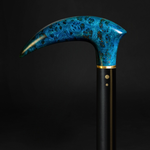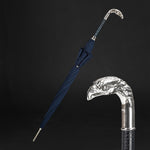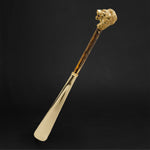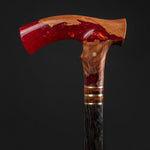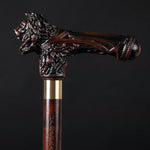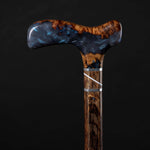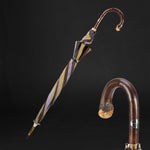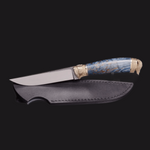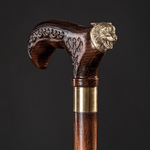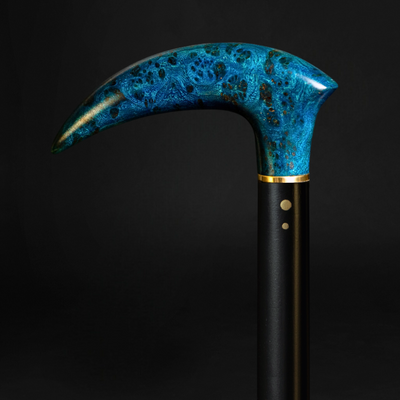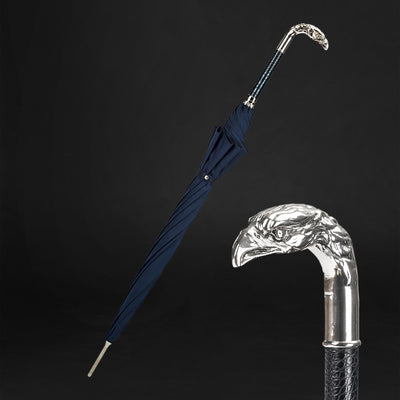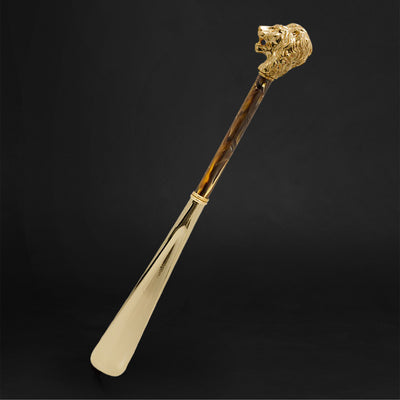You have no items in your shopping cart.
Recent Posts
-
Why an Elegant Cane Is a Thoughtful Gift for Loved Ones?
-
The Art of Christmas Design: Walking Canes That Celebrate the Season in Style
-
How an Ergonomic Walking Cane Handle Prevents Hand and Wrist Strain?
-
How to Walk With a Cane Correctly to Avoid Back or Shoulder Strain?
-
5 Common Mistakes People Make When Buying a Walking Cane (and How to Avoid Them)
-
How to Choose a Walking Cane That Reflects Your Personality (Not Just Your Needs)?
MOST POPULAR NOW
11
Oct
A walking cane is more than just a mobility aid—it’s a daily companion. While many people focus on cane height and shaft material, the handle design is just as important, if not more. The wrong handle can cause discomfort, fatigue, and even long-term hand or wrist strain. On the other hand, an ergonomic walking cane handle provides proper support, making walking easier, safer, and far more comfortable.
Let’s explore how ergonomic cane handles help prevent hand and wrist strain and what you should look for when choosing one.
How an Ergonomic Walking Cane Handle Prevents Hand and Wrist Strain?
Why Handle Design Matters?
When you walk with a cane, most of your weight and pressure transfers through the handle. A poorly designed handle can:
-
Concentrate pressure on a small area of the palm.
-
Force the wrist into unnatural positions.
-
Cause numbness, calluses, or joint pain with long-term use.
This is why ergonomic handles are designed with shape, comfort, and biomechanics in mind.

How Ergonomic Cane Handles Prevent Strain?
1. Distributes Pressure Evenly
Ergonomic handles are shaped to fit the natural curve of the hand, spreading weight across the palm instead of creating pressure points. This prevents soreness and blisters during prolonged use.
2. Supports Natural Wrist Alignment
Unlike traditional round or straight handles, ergonomic grips keep the wrist in a neutral position. This reduces strain on the wrist joint and minimizes the risk of carpal tunnel or tendon inflammation.
3. Improves Grip and Stability
Textured or contoured ergonomic handles prevent slipping, even if your hand gets sweaty or tired. A secure grip means less overcompensation from the wrist and forearm muscles.
4. Reduces Fatigue During Long Walks
Because the handle minimizes unnecessary muscle strain, walking feels less tiring. For those who use canes daily, this significantly improves endurance and comfort.
5. Adapts to Left or Right Hand Use
Some ergonomic handles are designed specifically for right or left hands. This custom fit ensures better comfort and prevents the hand from sliding into awkward positions.
Types of Ergonomic Cane Handles
-
Fritz Handle – Designed to reduce pressure on arthritic hands.
-
Offset Handle – Aligns the user’s weight directly over the shaft for maximum stability.
-
Palm Grip Handle – Molds to the shape of the palm for balanced support.
Each has unique benefits, so the best choice depends on your comfort needs and lifestyle.

Final Thoughts
An ergonomic walking cane handle is a small design choice that makes a big difference. By supporting the natural alignment of your hand and wrist, it reduces strain, increases comfort, and allows you to walk with greater ease and stability.
When choosing a cane, don’t just look at the shaft or material—pay close attention to the handle. Your hand and wrist will thank you.
Also Purchased
-
Beige Walking Cane for Ladies Chamomile Flower, Wooden Walking Stick
Introducing our beautiful Beige Walking Cane for Ladies with Chamomile Flower, a Wooden Walking Stick that is hand carved and handmade, making it both pretty and unique. This walking cane...$79.50 -
Art Deco Walking Stick Solid Silver Handle Malacca Shaft
Art Deco Walking Stick Solid Silver Handle Malacca Shaft. Stunning Art Deco silver handle with a very tactile feel. We created this cane design so that when you use the...$197.50 -
Exotic Burl Wood Walking Cane – Fashionable Artisan Stick
A sculptural statement in deep, oceanic blue — this walking cane is more than a support accessory, it's wearable art. Meticulously hand-shaped from stabilized burl wood, the handle evokes the...$425.00 -
ArtWalkingSticks™ MAGIC Walking Cane, Handmade - Make to Order
This piece of art is created for those who value details. We make one of a kind, handcrafted wood and resin canes. Our Wooden Canes are completely unmatched in creativity....$430.00 -
Umbrella with Eagle Handle, Fashion Umbrella For Men
Make a bold and fashionable statement with our Umbrella with Eagle Handle - a unique and functional accessory designed for men. The striking eagle handle is the highlight of this...$325.00 -
Fashionable Lion Shoehorn Long Handle, Pearly Brown Shaft, Handmade
Introducing our Fashionable Lion Shoehorn, a handcrafted, long-handled shoe horn with a pearly brown shaft that's both stylish and practical. The intricate Lion design adds a touch of elegance to...$240.00
















